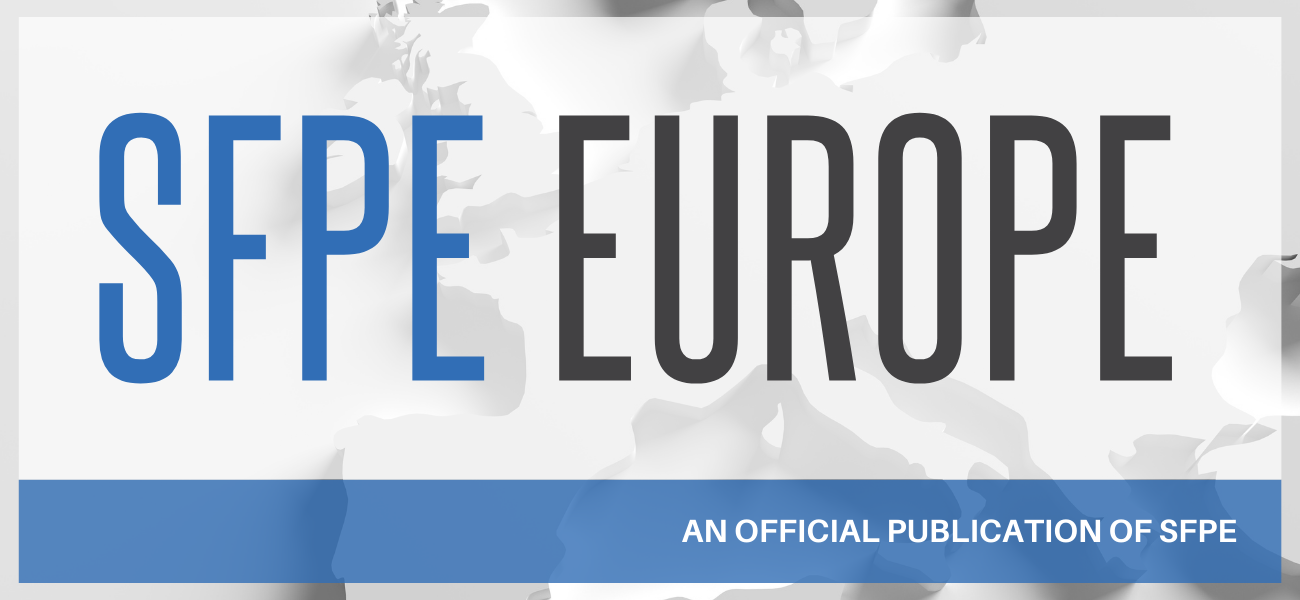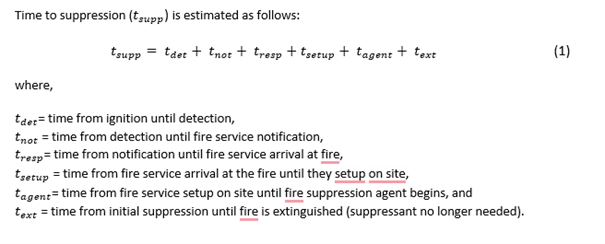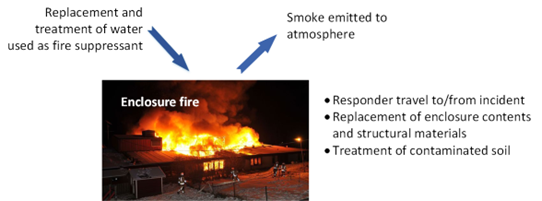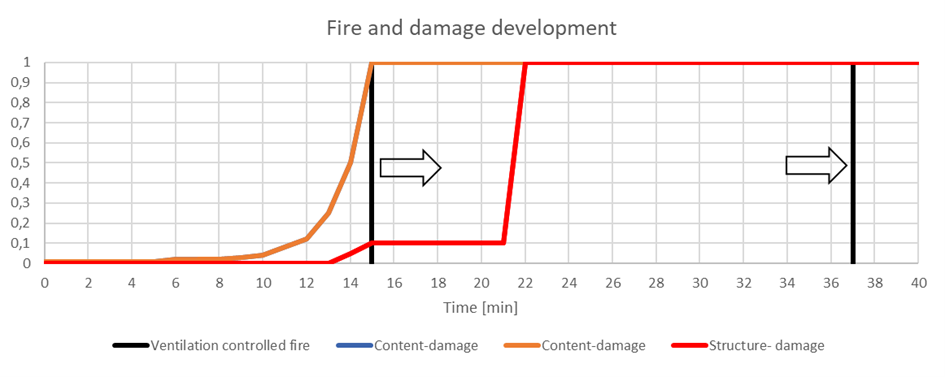
View the PDF here
Environmental Benefits of Rapid Fire Detection
By: Margaret McNamee*, Brian Meacham†, Robert McNamee*, Francine Amon‡,
*Lund University, Sweden,
†Crux Consulting, USA
‡RISE, Sweden
This article is brief summary of the Lund University Report 3257, available free for download here: https://lucris.lub.lu.se/ws/portalfiles/portal/173443064/Report_Environmental_Impacts_of_Rapid_Fire_Detection_-_Nov_30_2023_FINAL_rev2.pdf. The research was funded by Honeywell International Inc.
Environmental impact of fires
An unintended fire in a large building can have a significant, negative impact on the environment. This is not only due to the release of toxic gases, particulate matter, and other products of combustion [1], but also due to potential impacts of responder fire service apparatus [2] and the potential for contaminated water run-off from fire suppression. In addition, there is an environmental impact due to the replacement of the structure and/or the contents of the building after the event [3]. In most instances, fire protection measures in a building are installed to facilitate protection of life and property, either mandated by building codes or insurance. However, fire protection systems also have the potential to reduce the environmental impact of a fire should it occur. This study considers the environmental benefit that can be gained from the early detection and suppression of a fire, as assessed using a modified version of the Fire Impact Tool [4]. The work presented in this paper reflects a ‘first order’ proof of concept approach. Outcomes suggest that with additional data, the Fire Impact Tool can be a valuable tool for such assessments.
Environmental impact in relation to the time until fire suppression
A fundamental premise of this work is that the larger a fire grows, the greater the environmental impact. Therefore, if the fire size can be reduced by rapid detection and suppression, the potential environmental impacts can be reduced. For this first order approach to the problem, we have drawn a parallel to the ‘available safe egress time’ versus ‘required safe egress time’ approach (ASET/RSET) used for life safety analysis in case of fire [5]. In this work, the comparison is ‘environmental impact of fire’ with ‘time to fire suppression’.
Environmental impact is related to several types of emissions and environmental costs:
1. Emissions from the fire itself;
2. Emissions associated with Fire Service response;
3. Emissions associated with replacement of burned contents;
4. Emissions associated with replacement of a damaged structure.
Emissions from the fire itself are estimated based on the size of the fire, i.e. the amount of fire effluents
produced is related directly to an assumed fire effluent rate curve (see Figure 1). The overall heat
release rate (HRR) curve can then be used to estimate emissions as a function of time to suppression.
In the methodology developed within the Fire Impact Tool, the structural system is timber, the building
is a single story, and the fire emissions are scaled based on the size of the enclosure and its associated
openings.

Figure 1. Stages of Fire growth [6] highlighting where detection and the involvement of sprinklers is expected, i.e. before entry into the uncontrolled burning phase.

Estimating environmental impact using the Fire Impact Tool
The original Fire Impact Tool [4] was comprised of three components: fire models, environmental risk assessment (ERA) and lifecycle assessment (LCA). The fire models support the ERA and LCA calculations by establishing fire growth curves that determine the amount of damage done and the amount of effluents released to the environment for two types of fires, vehicles and enclosures. The tool uses ERA modelling to predict environmental impacts to the local surroundings from fire water run-off and it uses LCA modelling to predict global environmental impacts (not tied to the local environment). In the version of the Fire Impact Tool used for this project, the ERA calculations have been removed and the focus is on a building fire scenario, see figure 2 for a schematic of the system boundaries.

Figure 2: The system boundaries for the modified Fire Impact Tool include replacement and treatment of water as a fire suppressant, smoke from the fire, responder travel, treatment of contaminated soil, and replacement of enclosure contents and structural materials.
A simplified fire model calculates the heat release rate based on the ventilation factor, assuming that all available oxygen is used for combustion [7] and that the fire is fully developed:

Where HRR is the heat release rate [MW], A0 is the opening area [m2], and H0 is the average opening height [m]. This is reasonable given that the emissions created in the early stages of the fire are minor. The emissions from the fire to the atmosphere are estimated based on data from an experimental study performed at RISE [8].
Scenario based assessment
For the applications presented in this proof-of-concept project, a single room model is used for the enclosure fire. The basic structure of the building is a concrete slab floor, wooden joists and beams, wooden exterior cladding, triple glazed windows, painted gypsum interior walls, and a roof with exterior ceramic tiles. A single fire load and room size has been selected for this first application, 600 MJ/m2. All fuel has been assumed to burn inside the enclosure (i.e., the fuel excess factor was set to zero throughout). The room size was chosen as 100 m2 with an opening area of 10 m2 and average opening height of 1.2 m. In those scenarios where the fire service responds to the fire it has been assumed that 5 heavy vehicles have responded together with 1 ambulance and 2 small additional vehicles, all vehicles with 15 km one-way travel distance.
A number of assumptions were made to calculate the environmental impact associated with the scenarios described in table 1:
- The fire is ignited at time 0 min. Once the fire is ignited, the item first ignited will require replacement (corresponding to 1% of the contents).
- The fire growth period starts approximately 5 min from ignition, when the fire moves beyond the item first ignited.
- Once the fire moves beyond the first item ignited, the fire spread is approximately exponential.
- When approximately 50% of the contents have burned, it is assumed that surface material (part of the structure) will begin to be involved in the fire and need replacement. This involvement increases for 2 minutes until the point of flashover at 15 minutes. From 15-21 minutes it is assumed that all interior finish (gypsum boards, etc.) will need to be replaced post fire.
- Once the fire reaches flashover at 15 minutes from ignition, all contents are damaged and need replacement.
- At 6 minutes after flashover (at 21 minutes), it is assumed that the structure is involved in the fire and there will be a need to replace/repair the structure, up to full replacement at 22 minutes until the end of the fire.
A schematic representation of the fire and damage development is given in Figure 4.

Figure 4: Schematic presentation of fire development and associated fire damage. Note that the ignition is at time t=0 min. The specific time progression corresponds to scenario 2, The first arrow corresponds to start of the ventilation controlled fire, the second arrow corresponds to the end of the ventilation controlled fire, in scenario 2 due to exhaustion of the fuel package.
In total six scenarios were analysed, see Table 1. Note that the timing corresponds to the terms given in Equation 1 and Figure 1.
Table 1: Summary of timing for scenarios investigated. Note times are cumulative.

The results of the calculations for Scenario 2 are shown in Figure 5 to illustrate the type of information which can be obtained from the calculations.

Figure 5: Environmental impact due to scenario 2 over time expressed as UPB. Note that t=0 is the time of ignition. Note that the units on the y-axis are eco-points (UBP) calculated according to the Eco-Scarcity method [9].
Conclusions
For the building typology, structural system and contents assumptions used in this study, findings show that early detection and extinguishment in combination is the best way to minimize the environmental impact of fires in buildings. Early fire detection and manual response with a fire extinguisher (or other) when the fire is very small limits the impacts most. Early fire detection, which notifies the fire service, coupled with automatic fire suppression (e.g., sprinklers), is also very effective, in that it gives the fire service the earliest opportunity to respond, and begins suppression of the fire automatically, so that the fire service will need fewer resources to extinguish any fire that may still be burning when they arrive.
This research represents proof-of-concept concerning the use of the Fire Impact Tool methodology to assess the environmental impact of different building fire scenarios with and without active intervention. Future research should consider different building structures and typologies, different compartment configurations and ventilation factors. Further, the timing was based on generic choices, comparisons between different types of detection technology would also be valuable. Finally, the LCA calculations have been based on UBPs and future applications would benefit from changing to an impact assessment method that uses more commonly used units, for example carbon dioxide equivalents (kg CO2 eq) to indicate global warming.
References
[1] McNamee M., Truchot B., Åström J., Marlair G., and Meacham B.J., Environmental Impact of Fires in the Built Environment: Emission Factors. 2022. Fire Protection Research Foundation, FPRF-2022-07, p. 68, https://www.nfpa.org/News-and-Research/Data-research-and-tools/US-Fire-Problem/The-environmental-impact-of-fire [Accessed September 2022].
[2] Amon F., Gehandler J., Stahl S., Tomida M., and Meacham B., Development of an Environmental and Economic Assessment Tool (Enveco Tool) for Fire Events. 2016: Springer, https://link.springer.com/book/10.1007/978-1-4939-6559-5 [Accessed October 2022].
[3] Wieczorek C., Ditch B., and Bill R., Environmental Impact of Automatic Fire Sprinklers: Part 2. Experimental Study. Fire Technology, 2011. 47(3): p. 765-779, DOI: 10.1007/s10694-010-0192-7.
[4] Amon F., Gehandler J., McNamee R., McNamee M., and Vilic A., Measuring the impact of fire on the environment (Fire Impact Tool, version 1): Project report and user manual. 2019. RISE Research Institutes of Sweden, RISE Report 2019:60, p. 77, http://www.diva-portal.org/smash/record.jsf?pid=diva2:1327502 [Accessed October 2022].
[5] Forssberg M., Kjellström J., Frantzich H., Mossberg A., and Nilsson D., The Variation of Pre-movement Time in Building Evacuation. Fire Technology, 2019. 55(6): p. 2491-2513, DOI: 10.1007/s10694-019-00881-1.
[6] Fitzgerald R.W. and Meacham B.J., Fire Performance Analysis for Buildings. 2nd ed. 2017, London: John Wiley & Sons, https://www.wiley.com/en-us/Fire+Performance+Analysis+for+Buildings%2C+2nd+Edition-p-9781118926338 [Accessed October 2022].
[7] Karlsson B. and Quintiere J.G., Enclosure fire dynamics. 2 ed. Environmental and energy engineering. 2000: CRC Press, https://www.amazon.com/Enclosure-Dynamics-Second-Bj%C3%B6rn-Karlsson/dp/1138058661 [Accessed July 2023].
[8] Simonson M., Blomqvist P., Boldizar A., Möller K., Rosell L., Tullin C., Stripple H., and Sundqvist J.O., Fire-LCA model: TV case study. SP report: 2000:13. 2000: RISE/Swedish National Testing and Research Institute, https://www.diva-portal.org/smash/get/diva2:962137/FULLTEXT01.pdf [Accessed July 2023].
[9] Frischknecht R. and Büsser Knöpfel S., Swiss Eco-Factors 2013 according to the Ecological Scarcity Method. Methodological fundamentals and their application in Switzerland. 2013. treeze Ltd, Environmental studies no. 1330, p. 252, www.bafu.admin.ch/uw-1330-e [Accessed July 2023].